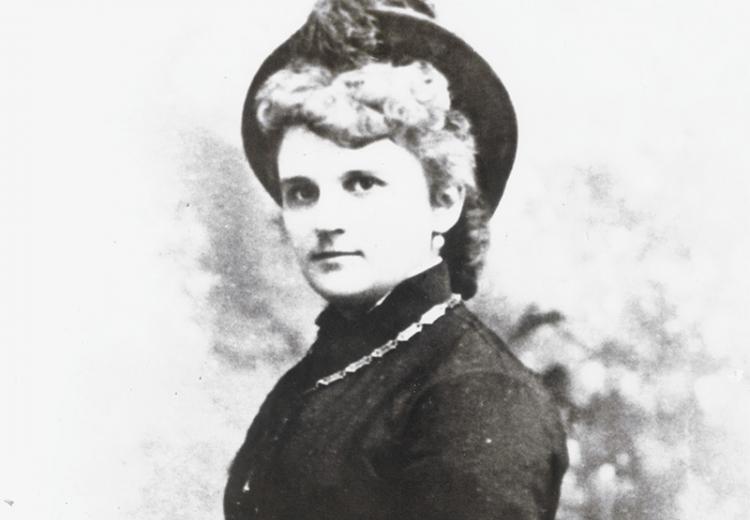Lesson 3: Kate Chopin's "The Awakening": Searching for Women & Identity in Chopin's "The Awakening"

Kate Chopin in riding habit.
By studying other female characters in The Awakening, students will see how Chopin carefully provides many examples of a socially acceptable "role" that Edna could adopt (of course, to the betrayal of her "awakening")—a perfect mother and wife, like Madame Ratignolle, an independent but somewhat ostracized "old maid" like Mademoiselle Reisz (who represents, in part, the artist), the "flirt" like Mariequita, one of the "young lovers" (they are never seen apart, and never described as independent of the other), a pious, almost single-mindedly religious, woman like the "lady in black," a servant to her children like the quadroon nurse, and so on. The novella, then, both portrays regional stereotypes while also criticizing cultural attachment to those stereotypes.
The men, likewise, operate as catalysts for these choices. Edna's husband, Leónce, and her children create the space for Edna to be like Madame Ratignolle. Alcée's presence allows her to be in a somewhat thrilling, but ultimately empty extra-marital relationship. Her romance with Robert is a particularly compelling complication: is there the danger of Edna and Robert becoming like the inseparable "young lovers"? Or could the relationship simply become like her affair with Alcée? Will she simply find herself in the role, once again, of "faithful wife" that she wanted to escape?
Given the severe reaction critics and readers initially had for The Awakening, Edna's choices were not regarded as popular or moral. What options did Edna have available to her?
Students should be encouraged to explore reasons why Edna and Robert's relationship may or may not work—what hints does Chopin leave for us, as readers, to help understand Edna's ultimate suicidal choice?
Guiding Questions
How does "The Awakening" speak to the roles of women and the conventions of literature at the end of the 19th century?
How does Kate Chopin use other characters in The Awakening in order to cast Edna Pontellier's desires—and social limitations—in sharp relief?
Learning Objectives
Reflect on how culture and setting plays an important role in a novel, especially in local color and regional literature.
Analyze Edna Pontellier's character development specifically in relation to other characters in the novella and generally in relation to women's roles in 19th-century America.
